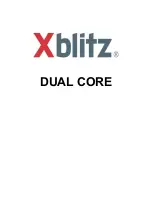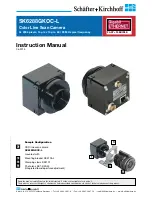
8
3
Installing the Mobile Camera System
After unpacking the system components, examine them for damage that
may have occurred in transit. If a component has been damaged, do not at-
tempt to install or operate it. File a claim immediately with the carrier stat-
ing the extent of damage. Carefully check all envelopes, shipping labels,
and tags before removing or destroying them. Ensure that the parts listed
in the packing list are contained in the packing carton.
Installing the Rear-View Camera
(CAMCCD-REARNTSC/CAMCCD-REARPAL)
Before the installation, find an appropriate location for the rear-view cam-
era with these considerations in mind:
• Although the camera is waterproof, repeatedly exposing it to direct,
high-pressure streams of water (as from a pressure washer) is not
recommended.
• The material properties and thicknesses of vehicle bodies vary widely.
The included hardware can accommodate many different vehicle
installations. However, it is recommended that you exercise judgment
when drilling holes into vehicle surfaces.
• When drilling into a vehicle structure, be sure that both sides of the
surface are clear of anything that could be damaged. Remove all
burrs from drilled holes. To prevent electrical shorts, grommet all
drilled holes through which wiring passes. (All Federal Signal camera
systems include grommets.) Also, ensure that the mounting screws do
not cause electrical or mechanical damage to the vehicle.
• This camera is recommended for rear-view applications in heavy duty
vehicles. In most installations the trigger wire of this camera would
be connected to the reverse lights of the vehicle for automatic viewing
when the vehicle is operating in reverse. The camera is also equipped
with night-vision and audio capability.
•
If the camera is to be used in a typical backup camera application,
the camera should be positioned so that the driver can obtain a wide,
unobstructed field of vision behind the vehicle.












































